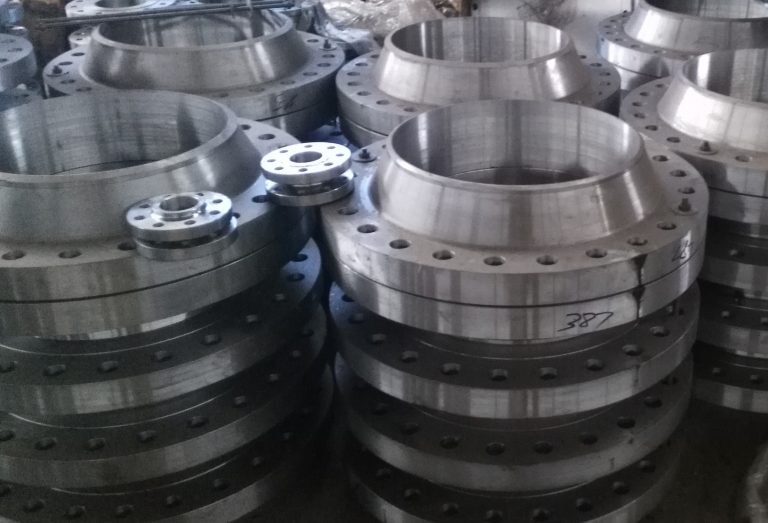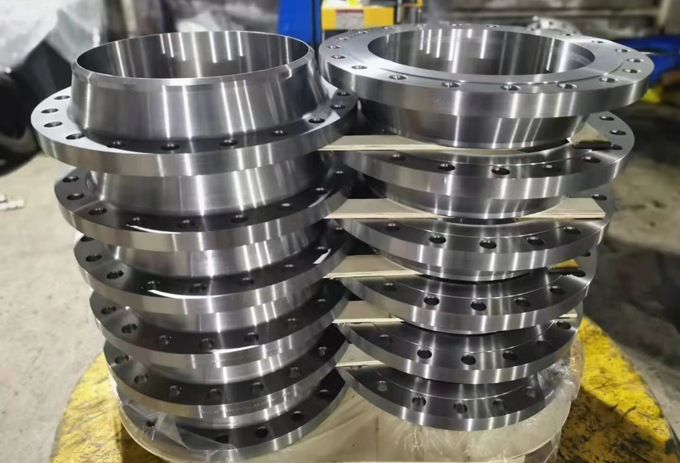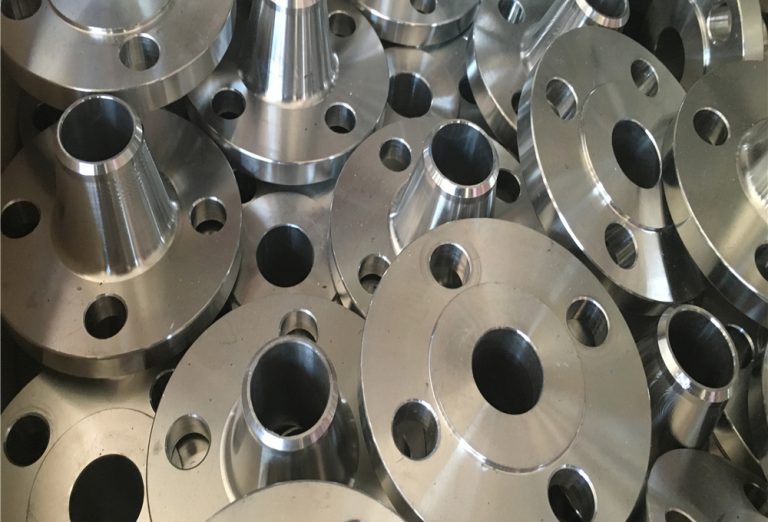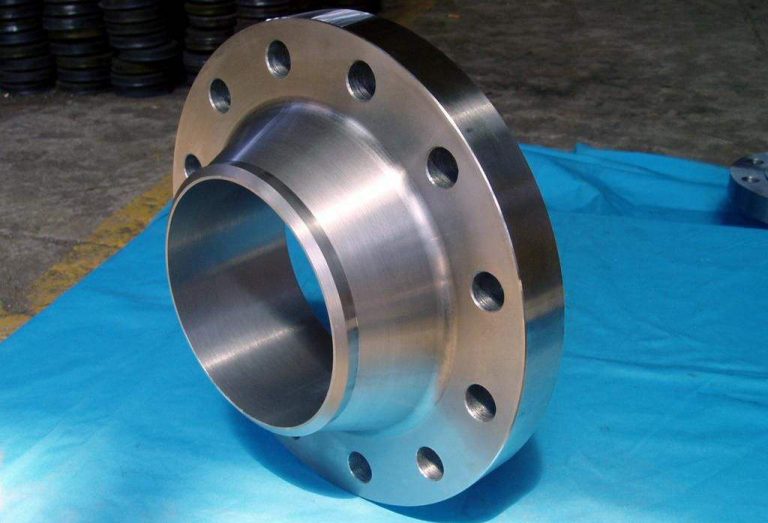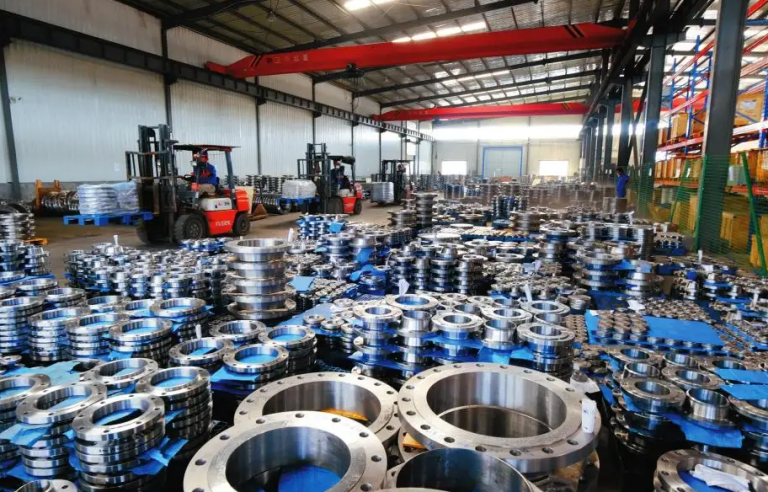Welcome to a journey into the heart of industrial connectivity – the realm of flange connections. As we embark on this exploration, we delve into the integral role that flange connections play in ensuring the seamless flow and secure containment of fluids and gases across various industries. From the oil and gas sector’s intricate pipeline networks to the precision demands of the pharmaceutical industry, flange connections stand as unsung heroes, providing the critical links that keep our industrial systems operational.
In this blog, we will unravel the fundamental principles of flange connections, examining their versatile applications in sectors such as energy production, chemical processing, and even shipbuilding. Beyond a mere mechanical connection, flanges serve as the lifelines of industrial infrastructure, where reliability and precision are paramount.
Join us as we navigate the nuanced landscape of flange connections, exploring their indispensable nature in different industries, dissecting real-world case studies, and discussing the evolving standards and technological advancements that shape their role in our ever-progressing industrial world. Let’s uncover the hidden power of flange connections – the silent force binding industries together.
Basic Principles of Flange Connections
Flange connections serve as crucial components in industrial systems, facilitating the secure linkage of pipes and equipment. Let’s delve into the fundamental definition and workings of flange connections:
Definition and Fundamental Operation:
A flange connection involves the use of flat, circular discs (flanges) at the end of pipes or equipment that are bolted together. These flanges create a sealed joint when compressed, connecting the adjacent components. The sealing effectiveness is achieved through the compression of a gasket, placed between the flanges, preventing leakage.
Key Role in Ensuring Tight Connections and Leak Prevention:
The primary function of flange connections lies in ensuring a robust and tight linkage between pipes and equipment. By creating a solid, sealed connection, flanges effectively prevent the unintended escape of fluids or gases. This is particularly critical in industries where containment and fluid control are paramount, emphasizing the pivotal role flange connections play in maintaining system integrity and preventing leaks.
Understanding the foundational principles of flange connections is essential for appreciating their significance in industrial applications, where reliability and safety hinge on the effectiveness of these connections.
Diverse Applications of Flange Connections Across Industries
Flange connections are versatile engineering components that find widespread applications across various industries. Let’s explore how these essential connections play pivotal roles in different sectors:
1. Oil and Gas Industry:
- Applications: Flange connections are extensively used in pipeline systems for the transport of crude oil and natural gas, ensuring secure and leak-free connections in drilling equipment.
2. Chemical Industry:
- Applications: Chemical processing plants rely on flange connections to connect various components, facilitating the safe transfer of chemicals and preventing leaks in the process.
3. Energy Production:
- Applications: Power plants, including both conventional and nuclear facilities, utilize flange connections in steam and water pipelines, contributing to the efficiency and reliability of energy production.
4. *Water Treatment Industry:
- Applications: Flange connections are integral in water treatment plants, connecting pipes and equipment to maintain the integrity of water treatment systems and prevent contamination.
5. Food and Pharmaceutical Industry:
- Applications: In industries with strict hygiene standards, such as food processing and pharmaceuticals, flange connections ensure sanitary and secure connections between equipment.
6. Shipbuilding:
- Applications: Flange connections are vital in the assembly of ship components, contributing to the structural integrity and reliability of marine systems.
7. Manufacturing Sector:
- Applications: Various manufacturing processes utilize flange connections to link pipes and equipment, ensuring efficient and controlled material flow.
8. HVAC Industry:
- Applications: Heating, ventilation, and air conditioning (HVAC) systems rely on flange connections to maintain sealed connections, contributing to the overall efficiency of climate control.
Flange connections are indispensable in creating reliable and secure links between different components, demonstrating their adaptability across diverse industrial landscapes. Their applications extend beyond mere mechanical connections, influencing the efficiency, safety, and integrity of systems in numerous sectors.
Real-world Case Study: Flange Connections in the Oil and Gas Industry
In the oil and gas industry, flange connections are critical components that ensure the integrity of vast and complex pipeline systems. Let’s delve into a specific case to illustrate the importance of flange connections in this sector.
A major oil and gas exploration and production facility faced an unexpected shutdown due to a flange connection failure in a crucial section of its pipeline network. The failure occurred at a flange point connecting a high-pressure section of the pipeline carrying crude oil from the extraction site to the processing facility.
Issues Identified:
- Leakage: The failure resulted in a substantial oil leak, posing environmental risks and triggering emergency response measures.
- Downtime: The unexpected shutdown led to significant downtime, affecting production schedules and causing financial losses.
- Safety Concerns: The leaked oil presented safety hazards, necessitating immediate containment and cleanup efforts.
Analysis:
Upon investigation, it was revealed that the flange connection failure was attributed to a combination of factors, including corrosion on the flange surfaces, inadequate bolt tightening during installation, and the lack of routine inspections.
Significance of Flange Connections:
- Pipeline Integrity: Flange connections are pivotal in maintaining the integrity of extensive pipeline networks, ensuring that oil and gas can be transported securely from extraction sites to processing facilities.
- Environmental Safety: Properly functioning flange connections prevent leaks, safeguarding the environment from potential contamination and ecological damage.
- Operational Reliability: The reliability of flange connections directly impacts the operational continuity of the entire oil and gas production process.
This case emphasizes the critical importance of regular inspection and maintenance of flange connections in the oil and gas industry. It underscores the need for proper installation practices, including adequate bolt tightening and corrosion prevention measures, to ensure the ongoing reliability and safety of flange connections in such demanding environments.
Exploring Industry Standards for Flange Connections
Different industries have unique requirements and standards when it comes to flange connections. Let’s delve into the specific standards demanded by various sectors:
1. Oil and Gas Industry:
- Standards: API 6A, API 6D for oilfield equipment and pipeline valves.
- Requirements: Rigorous testing for high-pressure and high-temperature conditions, adherence to specific material standards to resist corrosion.
2. Chemical Industry:
- Standards: ANSI/ASME B16.5 for pipe flanges and flanged fittings.
- Requirements: Compatibility with various chemicals, adherence to material specifications, and sealing effectiveness under diverse operating conditions.
3. Energy Production:
- Standards: ASME B16.47 for large diameter steel flanges.
- Requirements: High-strength materials for durability, precision in flange dimensions, and compliance with pressure and temperature specifications.
4. Water Treatment Industry:
- Standards: AWWA C207 for steel pipe flanges for waterworks service.
- Requirements: Corrosion resistance, compliance with drinking water standards, and durability in water treatment environments.
5. Food and Pharmaceutical Industry:
- Standards: ISO 7005 for metallic flanges.
- Requirements: Hygienic design, materials suitable for cleanroom environments, and compliance with food and pharmaceutical safety regulations.
6. Shipbuilding:
- Standards: ABS Rules for Building and Classing Steel Vessels.
- Requirements: Marine-grade materials, compliance with ship classification standards, and resistance to saltwater corrosion.
7. Manufacturing Sector:
- Standards: DIN EN 1092 for flanges and their joints.
- Requirements: Precision in manufacturing, compatibility with various manufacturing processes, and adherence to safety standards.
8. HVAC Industry:
- Standards: SMACNA HVAC Duct Construction Standards.
- Requirements: Sealing effectiveness in air handling systems, compliance with HVAC industry regulations, and materials suitable for varying temperatures.
Each industry sets forth standards to ensure the reliability, safety, and compatibility of flange connections within their specific operational contexts. Adherence to these standards is crucial to guarantee the proper functioning of flange connections across diverse industrial applications.
Challenges of Using Flange Connections Across Industries:
Corrosion in Aggressive Environments:
- Challenges: Exposure to corrosive substances in industries like chemical processing can lead to flange corrosion.
- Solutions: Use corrosion-resistant materials, implement protective coatings, and conduct regular inspections to identify early signs of corrosion.
Extreme Temperature and Pressure Conditions:
- Challenges: Industries such as energy production may expose flange connections to high temperatures and pressures, affecting their performance.
- Solutions: Select flange materials suitable for extreme conditions, follow industry-specific standards, and ensure proper installation practices to handle temperature and pressure variations.
Fluid Compatibility Issues:
- Challenges: Compatibility issues may arise in industries like the pharmaceutical sector, where specific fluids can be incompatible with certain flange materials.
- Solutions: Choose materials compatible with the fluids being transported, conduct thorough material compatibility assessments, and consider specialized coatings or linings.
Hygiene and Cleanliness Requirements:
- Challenges: In sectors like food processing, maintaining hygienic conditions can be challenging due to potential crevices in flange connections.
- Solutions: Opt for hygienic design features, employ smooth-surface finishes, and conduct regular cleaning and sanitation procedures.
Vibrations and Dynamic Stress:
- Challenges: Industries with high levels of vibrations, such as manufacturing, can subject flange connections to dynamic stress, leading to fatigue failure.
- Solutions: Use flexible flange types, incorporate anti-vibration measures, and ensure proper gasket selection to absorb dynamic stress.
Regulatory Compliance:
- Challenges: Meeting regulatory standards, particularly in industries like water treatment, requires careful adherence to specific requirements.
- Solutions: Stay informed about industry regulations, conduct regular audits to ensure compliance, and engage with regulatory bodies for guidance.
Emergency Response Preparedness:
- Challenges: Unplanned events, such as leaks, may require rapid response and containment efforts, especially in the oil and gas sector.
- Solutions: Develop and practice emergency response plans, ensure the availability of proper containment materials, and conduct drills to enhance preparedness.
Operational Downtime:
- Challenges: Unexpected failures leading to downtime can be costly, affecting industries like manufacturing and energy production.
- Solutions: Implement routine maintenance schedules, conduct regular inspections, and consider implementing redundancy or backup systems to minimize downtime.
Addressing these challenges involves a combination of preventive measures, robust material selection, adherence to industry standards, and proactive maintenance practices. Continuous improvement and a commitment to best practices contribute to the resilience of flange connections across diverse industrial landscapes.
Common Issues and Solutions in Flange Connections
Issue 1: Leakage at Flange Connection
- Possible Causes: Damaged gasket, improper bolt tightening, uneven flange surfaces.
- Solution: Replace the gasket, ensure proper bolt tightening, grind or repair flange surfaces.
Issue 2: Corrosion in Flange Connection
- Possible Causes: Prolonged exposure to corrosive media, inadequate material selection.
- Solution: Choose corrosion-resistant materials, use protective coatings, conduct regular inspections, and perform maintenance.
Issue 3: Failure under High Temperature or Pressure
- Possible Causes: Materials not suitable for high temperatures or pressures, incorrect installation.
- Solution: Select materials resistant to high temperatures and pressures, ensure correct installation methods and bolt tightening.
Issue 4: Loosening of Flange Connection
- Possible Causes: Bolt loosening, vibrations, or dynamic loads leading to fatigue failure.
- Solution: Regularly inspect and re-tighten bolts, use flange types adaptable to vibrations, consider anti-vibration measures.
Issue 5: Accumulation of Substances at Flange Connection
- Possible Causes: Improper design, corners or crevices accumulating substances.
- Solution: Choose flanges with hygienic design, ensure smooth surfaces, and conduct regular cleaning and maintenance.
Issue 6: Flange Connection not Meeting Industry Standards
- Possible Causes: Choosing the wrong flange type, non-compliance with specific industry requirements.
- Solution: Ensure the selection of flanges compliant with standards, adhere to industry regulations, and conduct regular inspections to meet requirements.
Issue 7: Flange Connection Leading to System Downtime
- Possible Causes: Unpredictable failures, unforeseen events.
- Solution: Develop an emergency response plan, implement regular inspections and maintenance, consider using backup systems to minimize downtime.
These common issues and solutions underscore the comprehensive approach needed in maintaining flange connections, including correct material selection, regular inspections, and maintenance practices to ensure the reliability and stability of flange connections in various industrial applications.
Lewis Liu
Hello, I am Lewis Liu, a professional sales engineer with over ten years of experience in the flange fittings industry. I am highly knowledgeable in flange selection, installation, and maintenance. I am passionate about providing customers with the best solutions to ensure their pipeline systems run smoothly, safely, and reliably.
If you have any questions or concerns regarding flange fittings for your pipelines, whether it’s about selection, material choice, specification requirements, or any other aspect, please feel free to contact me at any time. I am committed to offering professional advice and assistance to help you make informed decisions and meet your needs.

